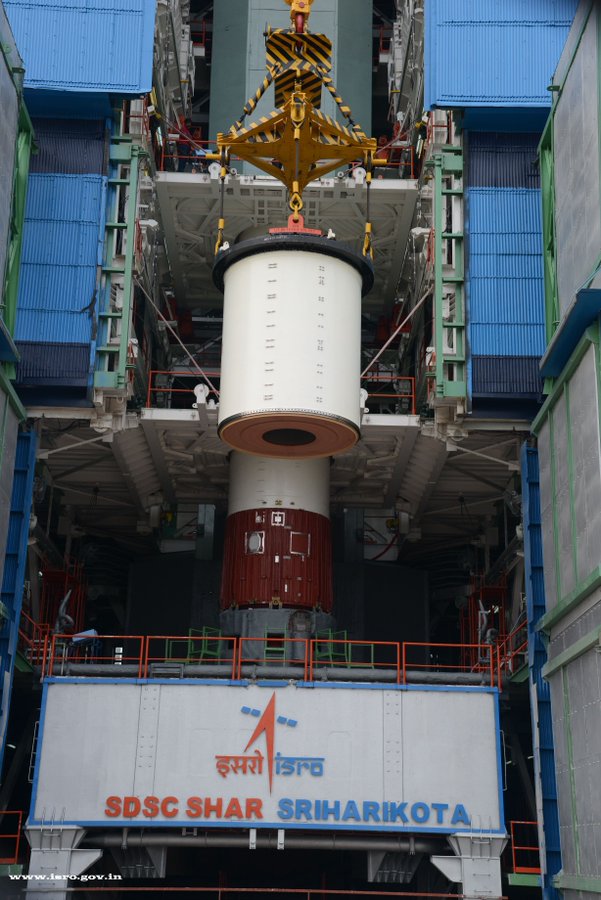
KalamSat which is set to be launched tomorrow by PSLV C44 was designed by a student team from SpaceKidz India (Source: Space Kidz India)
India’s space programme account will start off tomorrow, January 24, with the launch of Microsat-R, an imaging satellite for DRDO, and Kamalsat, a small communication satellite developed by students and Space Kidz India. The satellites will be carried by a new variant of India's Polar Satellite Launch Vehicle (PSLV) rocket.
ISRO is planning to have the launch at about 11:40 pm tomorrow night. The launch mission PSLV-C44 won’t just launch a satellite but will be the first in the world to use the rocket as a platform for experiments in space as well.
"We will be launching 700-kg Microsat-R and Kalamsat with a new variant of Polar Satellite Launch Vehicle (PSLV). In order to reduce the weight and increase the mass, an aluminum tank is used for the first time in the fourth stage," K Sivan, Chairman of Indian Space Research Organisation (Isro), told IANS.
Details about Kamalsat created by students
- Kalamsat is a communication satellite with a life span of two months
- The nanosatellite is a 10cm cube weighing 1.2 kg
- The satellite cost was about Rs 12 lakh
- Kalamsat will be the first to use the rocket's fourth stage as an orbital platform. The fourth stage will be moved to higher circular orbit so as to establish an orbital platform for carrying out experiments
- It is named after former Indian president Dr APJ Abdul Kalam and was built by an Indian high school student team, led by Rifath Sharook, an 18-year-old from the Tamil Nadu town of Pallapatti
- It is the world's lightest and first ever 3D-printed satellite
The satellite launch will take place 90 km off Chennai -- from the first launchpad at the Satish Dhawan Space Center at Sriharikota.
Srimathy Kesan, Founder CEO of Space Kidz India, told IANS that her dream of putting a satellite built by students will become a reality tomorrow night with the launch of Kalamsat.
According to her, it will be the first satellite of Space Kidz India to be in a proper orbit as its earlier satellites were suborbital ones. The nanosatellite will also enter history books on that account.
Space Kidz India is working towards promoting art, science and culture for students of India, and to create an international platform for them.
Plans to make Vikramsat for biological experiments in space
Chennai-based Space Kidz India now plans to build another satellite - Vikramsat - to do some biological experiment in space, said a top official.
"We are planning to build a satellite called Vikramsat to do some biological experiment in the space. By this we hope to contribute in a small way to India's ambitious human space mission Gaganyaan," said Kesan.
How was the satellite launch vehicle changed?
The launch tomorrow is a special event because of the multiple utility of the rocket and its configuration.
The PSLV is a four-stage engine expendable rocket with alternating solid and liquid fuel. In its normal configuration, the rocket will have six strap-on motors hugging the rocket's first stage.
However, the launch rocket tomorrow will have just two strap-on motors for the first time, called the DL mode.
Moreover, the final fuel stage of the rocket will also play an additional role.
After the two satellites are put into the correct orbits, the PSLV C44 will travel in a circular orbit and provide a platform for carrying out space experiments.

KalamSat is the world's lightest satellite! (Image: Wiki)
IIST is co-building a satellite with California, Surrey institutes
After launching several satellites built by students of different universities, ISRO will launch one built by the Indian Institute of Space Science and Technology (IIST) in collaboration with California Institute of Technology, an Indian space agency official said.
"The IIST is designing a satellite along with California Institute of Technology," Isro Chairman K Sivan, told IANS.
While the Indian Space Research Organisation (ISRO) has been putting into orbit satellites built by Indian universities and educational institutions since 2009, the non-building of a satellite by IIST was noticeable.
The IIST is an autonomous body under the Department of Space and is a deemed university inaugurated in 2007.
According to the California Institute of Technology, the student-designed and -built satellite would be a test bed for a new type of space telescope and is called AAReST (Autonomous Assembly of a Reconfigurable Space Telescope).
The AAReST is designed and built in large part by students of California Institute of Technology in collaboration with IIST and Surrey Space Centre in England.
GSAT 31 communication satellite launch in February
ISRO will also launch GSAT 31, a communication satellite, during the first week of February by Ariane space rocket Ariane, said Sivan.
"The satellite is in Kourou. It will be put into orbit by Ariane rocket. Weighing about three ton, the satellite is a replacement for INSAT-4CR. It will be followed by GSAT 30 which will be a replacement for INSAT 4A," Sivan said.
(With inputs from IANS)








No comments:
Post a Comment